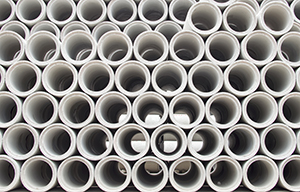
Dual containment piping systems offer an extra layer of protection in the transport of hazardous materials. These systems include a secondary pipe enclosed around the main piping system for added protection against breakage and leaking.
The EPA now mandates the use of dual containment piping systems for many types of materials transport. The goal is to avoid leaking of waste or hazardous substances into the environment while they are being transported.
Dual containment piping systems are made of high quality materials to ensure safety and long-lasting viability. High-density polyethylene plastic, polyvinyl chloride, polypropylene, and stainless steel are some of the most common materials used.
The Top Scenarios Where Dual Containment Piping Systems Should Be Used Include:
Wastewater treatment pipes- A dual containment piping system should be used where a waste water pipe come near a drinking water catchment area.
Hazardous waste landfills- Drainage from landfills for hazardous materials should be kept out of the environment via dual containment piping systems.
Remediation sites- The removal of contaminants or pollution from the soil, groundwater, sediment, or surface water is made safer through the use of dual containment piping.
Fuel storage and transport- Tank farms and fuel storage systems must conduct business in accordance with area safety regulations, and a dual containment system can be crucial.
Processing plants- Runoff or drainage from product or food processing plants must be disposed of safely, and dual containment piping offers an added layer of security.
Chemicals and acids- Dual containment piping systems should also be used in the transport of toxic chemicals and corrosive acids.
Toxic gas transport- Gases used in semiconductor manufacture or other processes should be transported with a dual containment system.
Dual containment piping systems are extensively tested during manufacture to ensure quality and viability. However, including a leak detection system within the dual containment piping can assist with becoming aware if a carrier pipe has become compromised.
Considerations such as pressurization of the lines, underground installations, the concentration of the material, space constraints, UV ray exposure, thermal expansion and contraction, environmental factors, and possible chemical combinations should all be considered when selecting a dual containment piping system.
If your company or government agency requires a dual containment piping system, contact W. P. Law, Inc. to learn about your best options.









